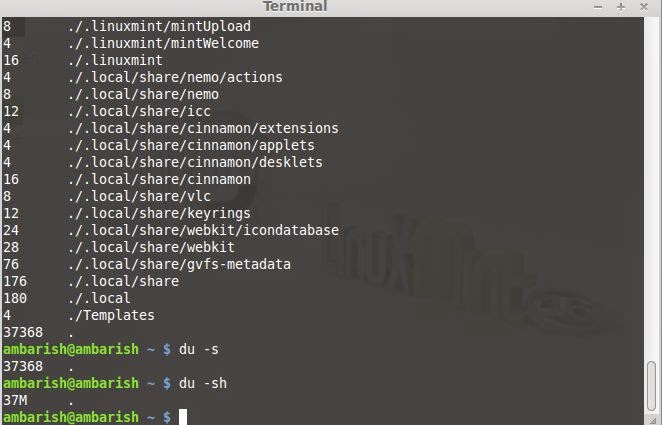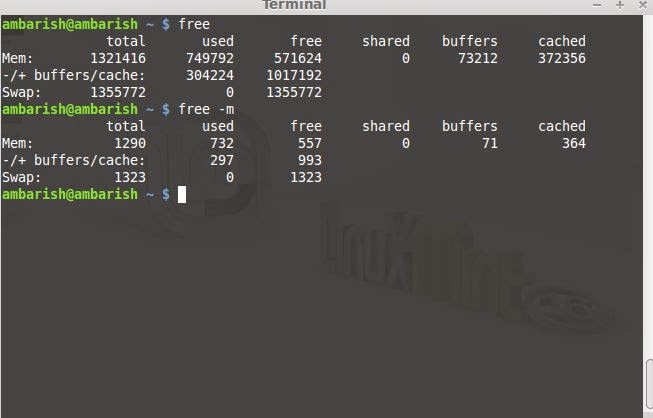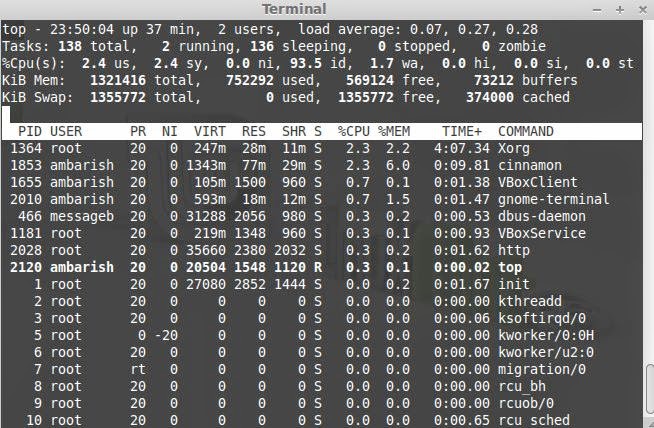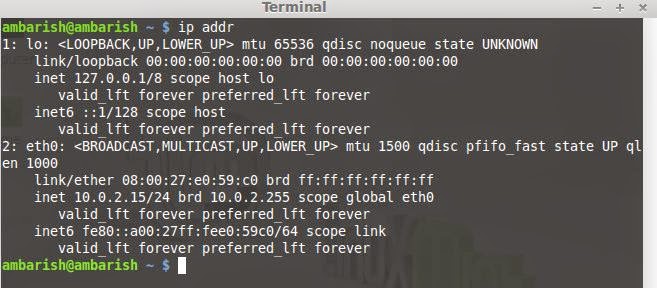There are commands that you can use in Terminal to get your system information like disk space usage, free and used memory, information about running processes and system resources, machine and kernel information etc.
Getting system information in Linux - Terminal commands
> Open Terminal.
df The df command displays filesystem disk usage for all mounted portions. However, it will provide the system disk usage information in a blocks. You can use df -h to generate report in megabytes and gigabytes instead of blocks, h stands for "human readable".
du du commands displays the disk usage for a directory. Variants are du -s, du -h, du -sh. s stands for "Summary" and h means "Human Readable".
free It displays the amount of free and used memory in the system. free -m will give the information in megabytes.
top top is table of processes. It displays information on your Linux system, running processes and system resources that includes CPU, RAM and swap usage. It all displays the number of tasks being run.
You may have to press "q" to exit.
uname -a The uname command with -a option prints all system information, including machine name, kernel name and
version, and a few other details.
lsb_release -a The lsb_release command with the -a option prints version information for the Linux release you're running.
ip addr It prints the ip address of your machine.
These 7 commands will help you in getting basic system information in Linux. Do I miss something? Please add it in the comment section and I will update the post.
Note: I am using Linux Mint 16 Petra in Oracle VM Virtual Box 4.3.2 r90405.







0 comments:
Post a Comment